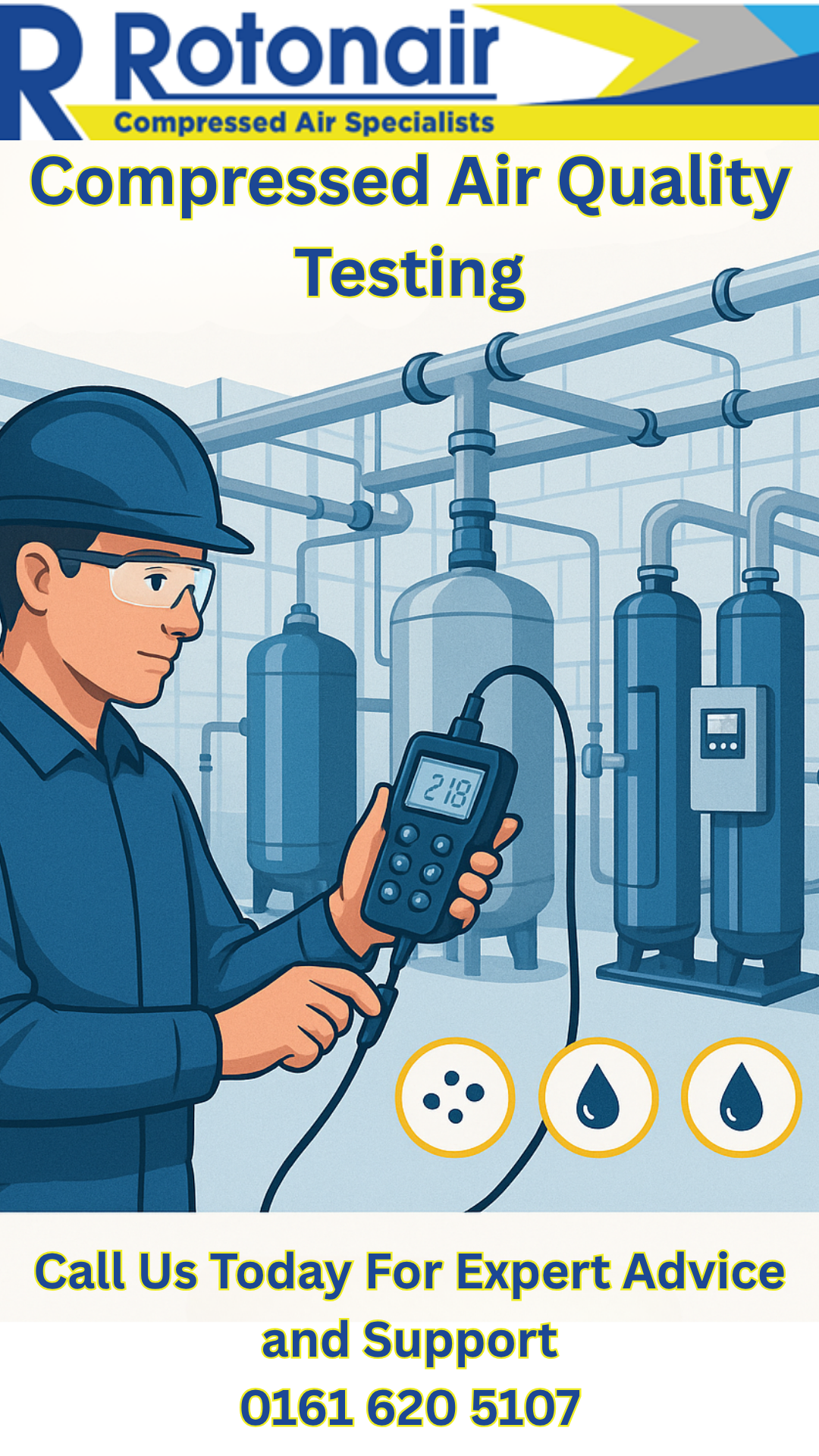
Compressed Air Quality Testing – Why It Matters
At Rotonair, we understand that compressed air plays a crucial role in countless commercial and industrial processes. In many industries, the quality of that air isn’t just important—it’s essential.
Poor air quality can lead to product contamination, increased maintenance costs, and even production downtime. The main culprits behind poor air quality? Water, oil, and particles—the three primary contaminants found in compressed air systems.
Where Contaminants Come From
Contaminants can enter your compressed air system from several key sources:
-
Ambient Air Intake: The air drawn into your compressor brings in environmental pollutants like water vapour, dust, and hydrocarbon fumes.
-
The Compression Process: Mechanical operation introduces additional contaminants, including compressor oil (especially in oil-lubricated systems), wear particles, and vaporised fluids.
-
The Air System Itself: Older piping and tanks can harbour rust, scale, mineral build-up, and microbial growth, all of which degrade air quality over time.
Without proper air treatment and testing, your compressed air system could be a hidden liability—especially in sensitive sectors like food & beverage, pharmaceuticals, or electronics, where air may come into direct or indirect contact with products or packaging.
Site Testing & Compliance
Our trained engineers can visit your site with calibrated ISO 8573 air quality testing equipment* to carry out on-site compressed air purity testing. We provide certified results you can measure against ISO 8573-1 standards, covering:
-
Particle content
-
Dew point
-
Oil vapour concentration
